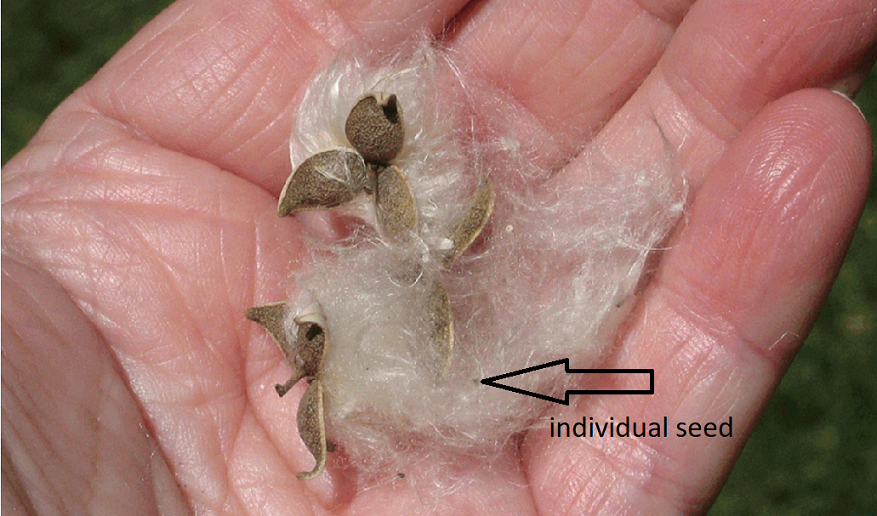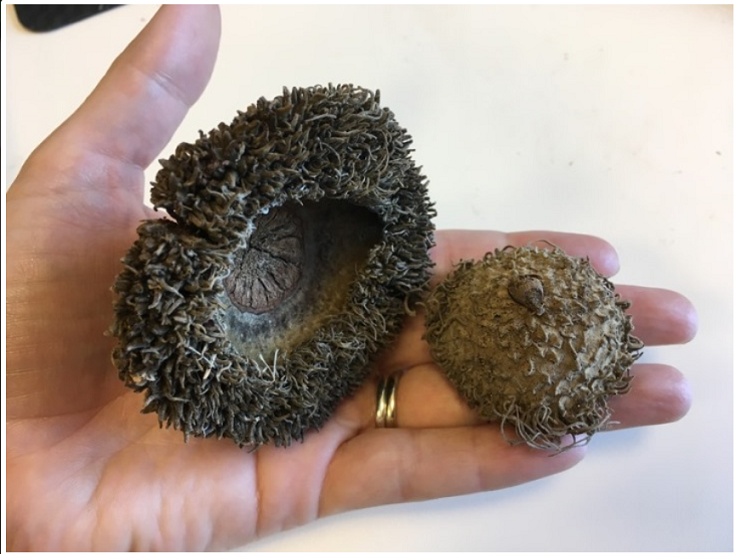Elementary Informal Education | Daily Do
How Do Seeds Get Around?

Biology Crosscutting Concepts Disciplinary Core Ideas Is Lesson Plan Life Science NGSS Science and Engineering Practices Elementary Informal Education Grade 2
Welcome to NSTA's Daily Do!
Sensemaking is actively trying to figure out how the world works (science) or how to design solutions to problems (engineering). Students do science and engineering through the science and engineering practices. Engaging in these practices necessitates that students be part of a learning community to be able to share ideas, evaluate competing ideas, give and receive critique, and reach consensus. Whether this community of learners is made up of classmates or family members, students and adults build and refine science and engineering knowledge together.
Introduction
Plants use many strategies to move their seeds far and away to help ensure the seeds will germinate and continue to live and grow. Some of these strategies might surprise you!
In today's task, How Do Seeds Get Around?, students and their families engage in science and engineering practices and use the thinking tool of structure and function to make sense of the science idea that plants have different parts that help them survive and grow.
Based on STEM: Have Seeds, Will Travel curated at NGSS@NSTA and Seed Dispersal Lesson (NGSS@NSTA curated).
Getting Started
Plants use many different strategies to spread their seeds far and away. This gives seeds the chance to land in places where they can get sunlight, water, and space to grow. Before reading Seeds Move! with your students, you may want to begin by asking students, "What do plants need to grow?" (sunlight and water).
You might next ask, "Imagine seeds on the ground right beneath the plant that dropped them. Would the seeds be able to live and grow? Why do you say so?" Consider pointing to the plants on the "A seed drifts" page (or scroll to 1:45 minutes in the video) or direct your students' attention to plants around the school, home, or community green space. Then ask students to turn and talk with a partner (a classmate or a family member). You may choose to use the partner conversational supports below:
Speaker: I think ____ because ____ .
Responder: I heard you say ____ . I agree/disagree because ____ .
As you listen to students' conversations, you might remind them, "What do plants need to live and grow? (water and sunlight) Would seeds beneath a healthy plant be able to get what they need to live and grow? Why do you say so?"
Bring students together and ask, "What are we in agreement about?" Students might agree that sprouted seeds (young plants) won't get sunlight if they are under the parent plant. They may say young plants won't have room to grow. Students may not bring up ideas about seeds beneath the parent plant not getting water because in their experience rain always reaches the ground (not the case in a rainforest where the canopy blocks sunlight, wind, and rain), but this is acceptable.
Engaging students in these discussions surfaces their prior knowledge about what plants need to live and survive and supports them in understanding why plants move their seeds far and away.
Most plants reproduce with seeds that come in all shapes and sizes. Some are large like a bur oak acorn, with an average of 75 acorns per pound, and some are small like the eastern cottonwood seed, with an average of 350,000 seeds per pound. The ways plants disperse seeds are both amazing and necessary!
Return to the Seeds Move! story. Ask students to find and describe one example of each of the following seeds in their journal.
-
A seed that is dispersed by water;
-
A seed that is dispersed by animals; and
-
A seed that is dispersed by wind.
Encourage students to use both words and pictures to describe the seeds. (If the spaces in the student journal are too small, provide students with a blank piece of paper.)
Ask students to identify in their drawing (by circling, or using arrows) the part(s) of the seed that helps it move the way it does. Ask them how they think the part(s) they identify helps the seed move. If students struggle with the how, ask, "What is it about the shape of this part that makes you think it helps move the seed by wind/animals/water? What is it about the material (thick or thin; stiff or bendy; holes or no holes; etc.) that makes you think it helps move the seed by wind/animals/water?
Next, return to the story. Ask students to find another example of a seed moved by wind (or animal, or water). You might divide students into groups and assign each group a category—wind, animal, or water—to find additional examples of seeds. Ask students to compare the seed they described with the new example. Ask, "How are the parts of these two (or more) seeds that help it move similar? How are they different? Make a list of things you would look for to figure out if a seed you haven't seen before is moved by wind (or animal, or water)."
Next, ask groups to share which structures (shapes and material properties) seeds that move by wind (or animals, or water) have in common. Give groups an opportunity to revise their lists after all of the groups have shared their ideas.
Ask students, "Based on your observations about seeds moved by wind, animals, and water, why do you think plants don't disperse their seeds in the same way?" (Seeds may have to travel far away to find sunlight and space; some seeds are too big to be carried by wind; not all seeds are eaten by or carried by animals.)
Consider providing students with pictures of seeds not included in the story and asking them to use their lists to determine how the seed might be moved.


Activity 2: Find Examples of Seeds All Around You!
Head outdoors and look for seeds all around your school, home, or community! Tell students not to touch or remove seeds from living plants. If students have access to a camera, ask them to take pictures of all the different kinds of seeds they find.
Students may have difficulty identifying seeds that are different from the seeds in Seeds Move! or different from the naked seeds they've planted at school or home. Consider watching Seed Dispersal—The Great Escape together to identify more examples of seeds and seed parts that help seeds move.
Ask students to choose one of the seeds they found and complete the following tasks in their journal:
-
Describe the seed using words and pictures.
-
Identify the part(s) of the seed that help it move by wind, animals, or water.
- Make a claim about how the seed is moved and support the claim with evidence. ("This seed is moved by ____ because _____ .")
Ask students to share their claim and evidence with a partner (classmate or family member). Consider using the partner conversational supports provided in "Getting Started" (above).
Activity 3: Engineer a Seed
Many versions of the "engineer-a-seed" activity are available online. If you are looking for a rainy-day activity to engage your students with, Have Seeds, Will Travel might be the place to start.
Consider these ideas to increase opportunities for students to develop engineering ideas while participating in the activity:
- Present the activity in the context of a problem to solve. For example, "Lima bean plants aren't moving their seeds (or any other bean you have available) far enough away to find space, sunlight, and water to live and grow."
- Give students an opportunity to ask questions about the problem.
- Share the criteria for success (which may answer some of the students' questions). In this case, the success criteria are (1) float in water for 5 minutes if the solution is to move seeds by water; (2) be carried by animal for at least10 feet if the solution is to move the seed by animals; or (3) move through the air at least 5 feet if the solution is to move the seed by wind.
- Share the constraints: What will limit the choices they make? (which may answer more of the students' questions) In this case, students may only use materials that come from plants (paper, wood, fibers, etc.).
- Consider using an engineering design process like the one from Engineering is Elementary to support students in designing a solution to the problem.
- Ask students to compare their designs; be sure to point out that there is always more than one way to solve a problem.
- Even if students' first designs are successful, ask students how they might improve their design if they had more time or additional materials. Engineers are always looking for ways to improve their designs!
NSTA Collection of Resources for Today's Daily Do
NSTA has created a How do seeds get around? collection of resources to support teachers and families using this task. If you're an NSTA member, you can add this collection to your library by clicking Add to My Library, located near the top of the page (at right in the blue box).
Check Out Previous Daily Dos From NSTA
The NSTA Daily Do is an open educational resource (OER) and can be used by educators and families providing students distance and home science learning. Access the entire collection of NSTA Daily Dos.


